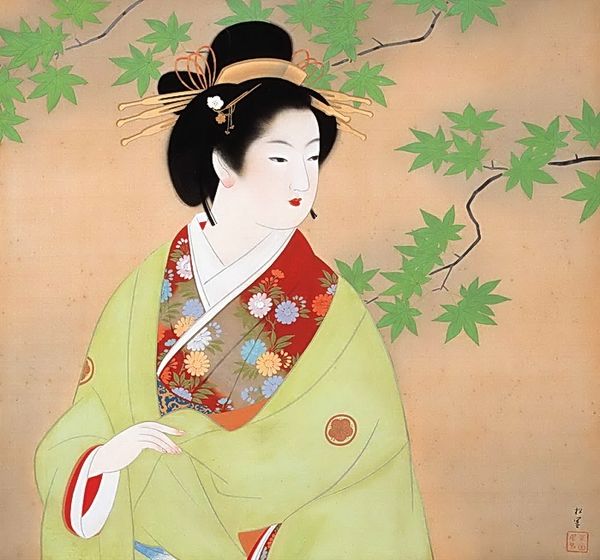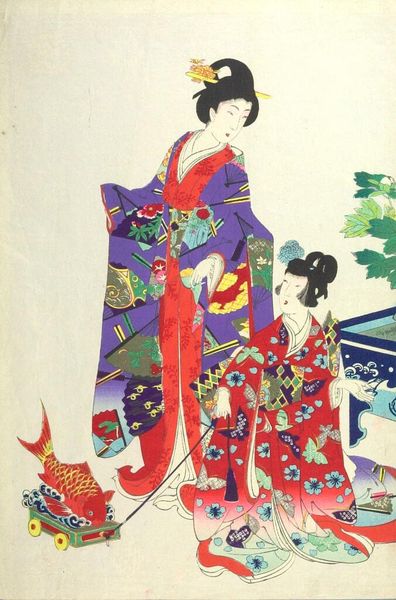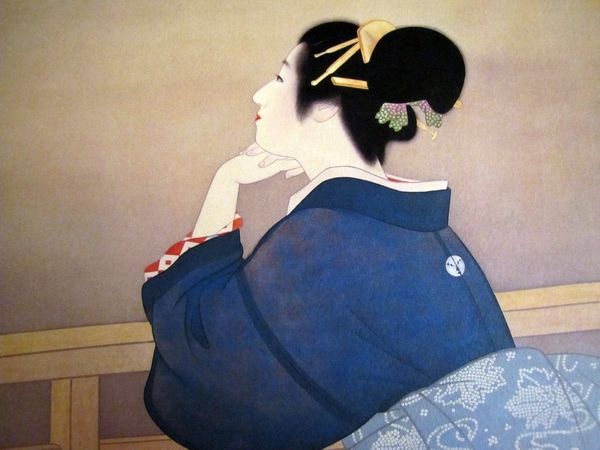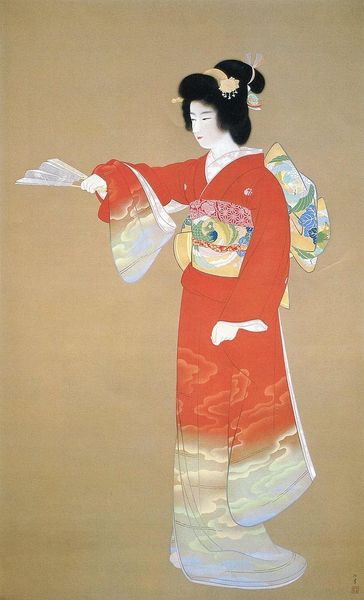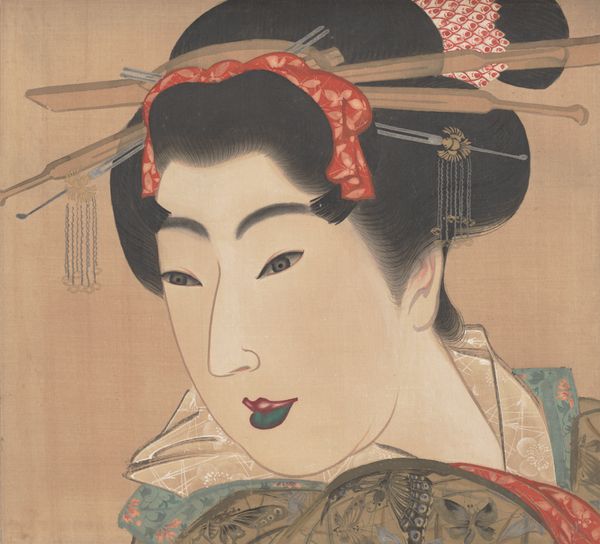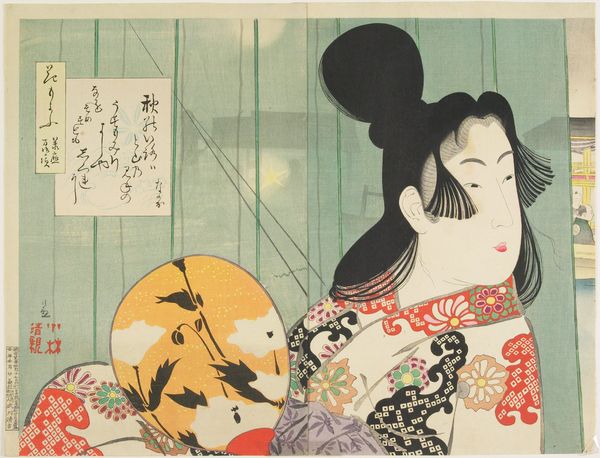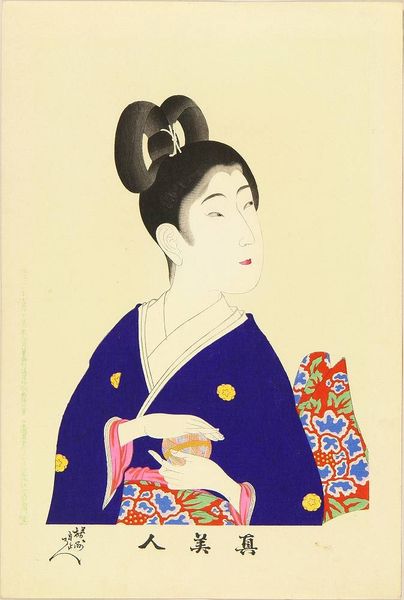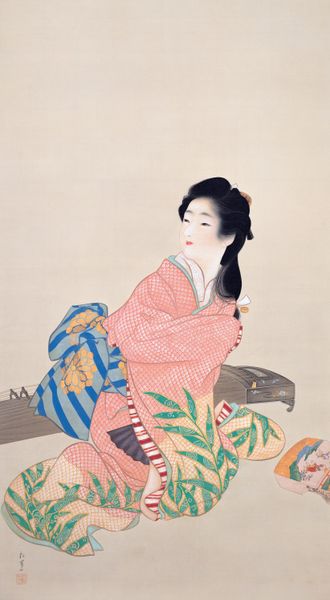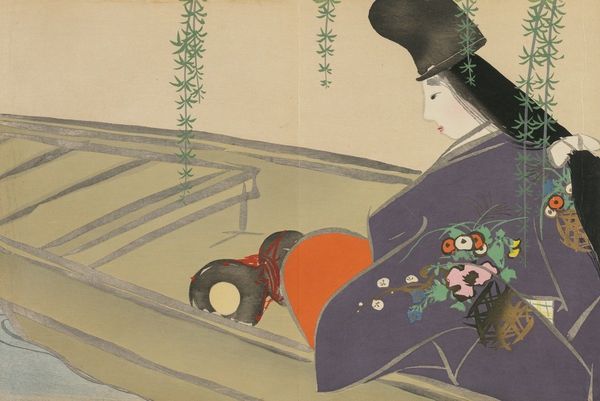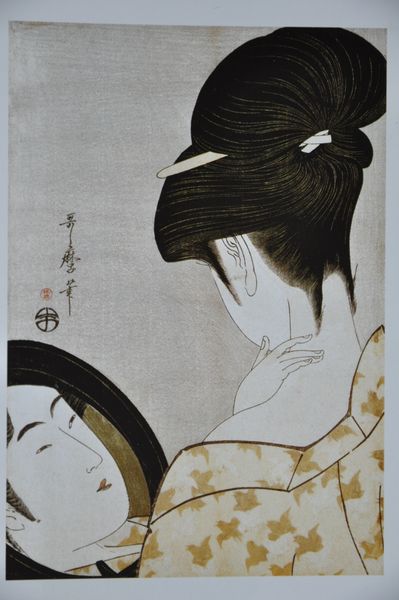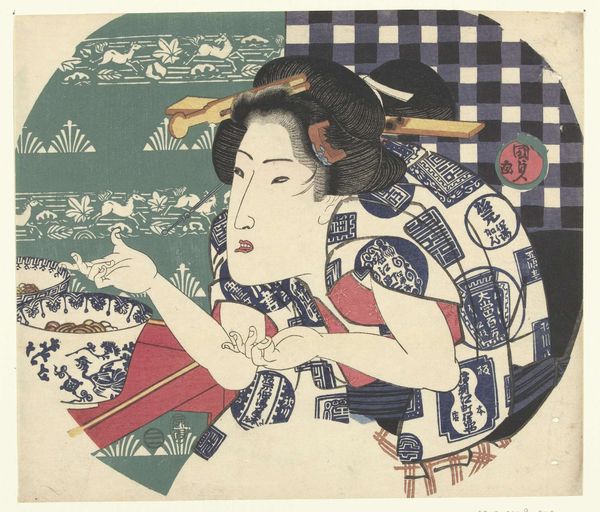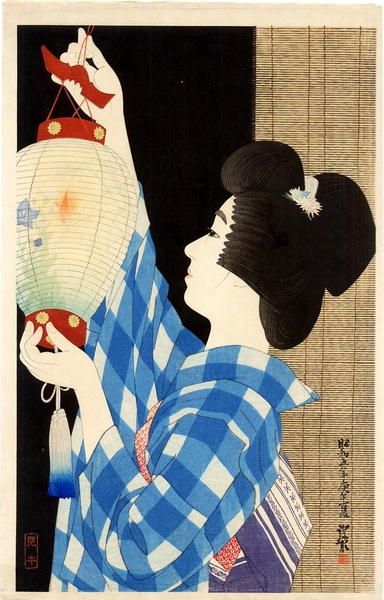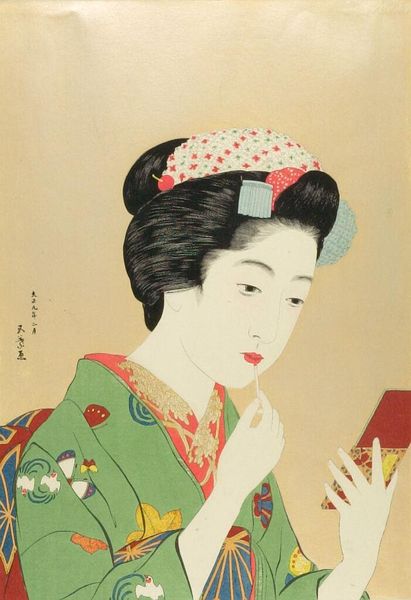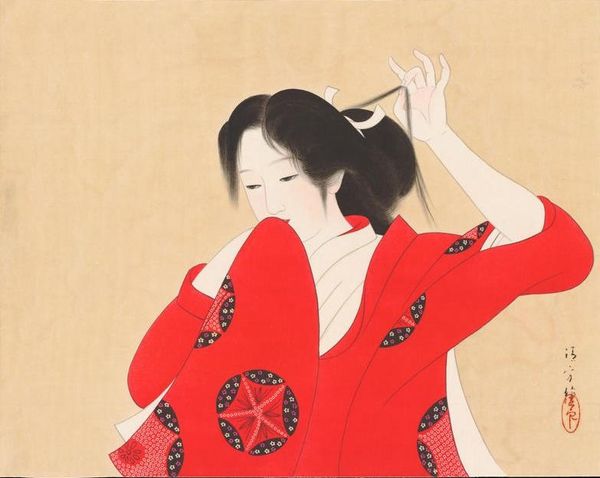
Dimensions: 77 x 95.6 cm
Copyright: Public domain
Curator: Standing before us, we have "Sound of Tsuzumi" painted in 1940 by Uemura Shoen. Editor: The composition feels quite poised. There's a striking stillness about her pose and downward gaze, like a held breath before a performance. Curator: Shoen was known for her depictions of Bijin-ga, paintings of beautiful women, often drawing inspiration from historical and literary sources. What meanings do you gather from this painting's imagery? Editor: The tsuzumi drum is quite important here. Historically, these drums were instruments mostly used by performers in Noh theatre. This would have signaled refined taste, but perhaps also an adherence to prescribed social roles. The color in her kimono is striking too—a vivid red with floral patterns gives off youthful energy. The pattern of those floral patterns is also significant as symbolic signifiers for a coming spring after a harsh winter. Curator: And it's important to remember the socio-political context. Created during wartime Japan, such images could be seen as idealized representations of Japanese womanhood, promoting a sense of national identity during turbulent times. Notice, too, the delicate execution. The tangible skill of the craft elevates what may seem to be a simple genre scene. What does the quality of these materials communicate? What did the ability to command that level of artisanship mean during this historical moment? Editor: I can also note the way Shoen utilizes negative space in her piece. The figure isn’t cramped or busy, rather set deliberately into emptiness so her iconic attributes—the instrument, her face, her pose—all come together. It creates an elegant presentation of archetypes and aspiration. Curator: It's fascinating to consider how an image intended to project specific ideals can now spark so many different, even contradictory readings about representation, culture, and the value we put on skilled handcraft. Editor: Yes, it’s clear that even simple images from the past are always so much more complicated than what initially meets the eye.
Comments
No comments
Be the first to comment and join the conversation on the ultimate creative platform.
